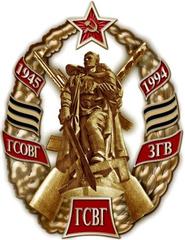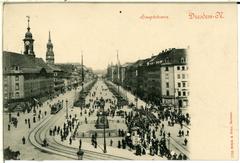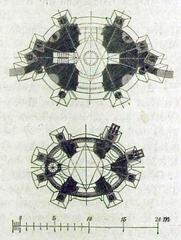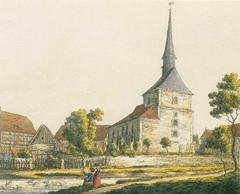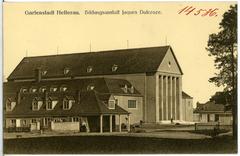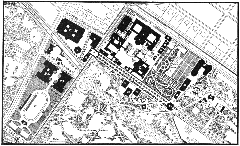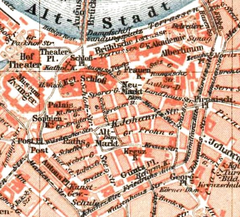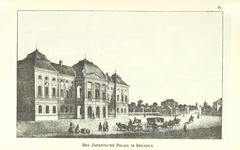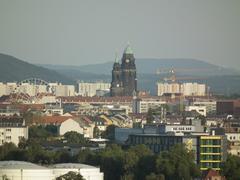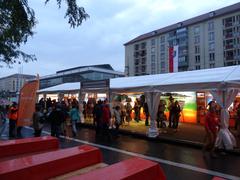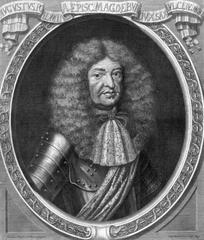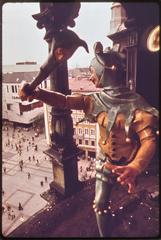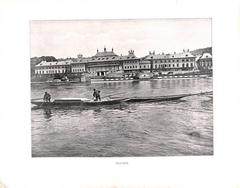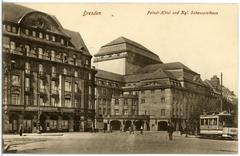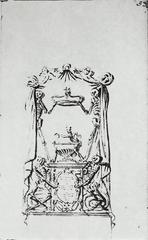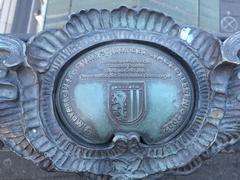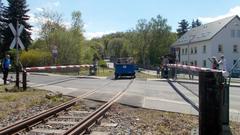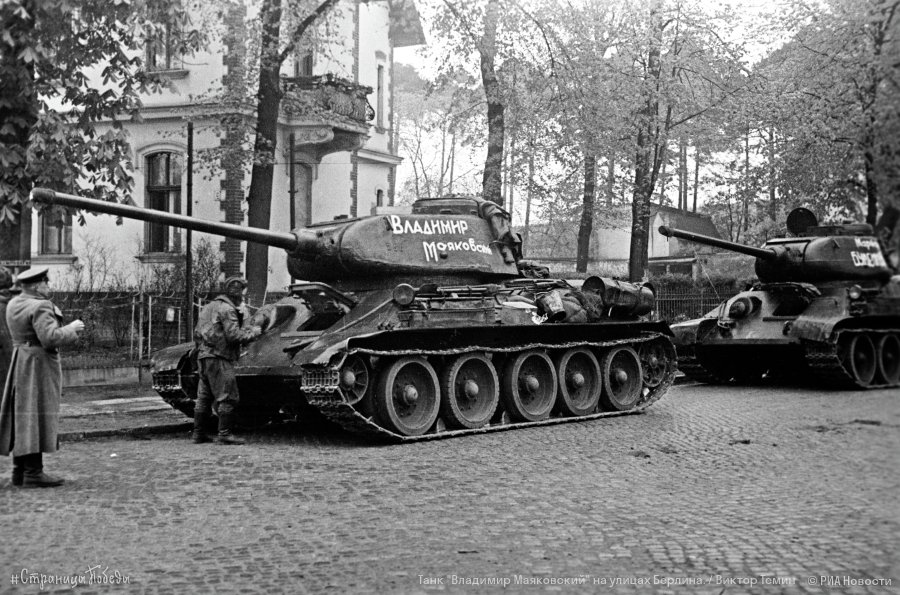
Visiting the 1st Tank Army Site in Dresden, Germany: Tickets, Hours, and Tips
Date: 14/06/2025
Introduction
Dresden is famed for its baroque skyline and rich culture, but its significance extends deeply into 20th-century military history. As the postwar headquarters of the Soviet 1st Guards Tank Army, the city became a pivotal Cold War garrison and a front line of geopolitical tension. Today, Dresden’s military heritage is preserved in museums, memorials, and the urban landscape itself, offering travelers and history enthusiasts a unique opportunity to engage with the city’s complex past. This guide provides a comprehensive overview of the 1st Tank Army legacy in Dresden, with detailed information on historical background, visitor logistics, guided tours, and practical travel tips.
Table of Contents
- Discover the Legacy of the 1st Tank Army in Dresden
- Historical Background of the 1st Tank Army
- Visiting the 1st Tank Army Sites in Dresden
- Visitor Information and Practical Tips
- Frequently Asked Questions (FAQ)
- Nearby Attractions
- Summary and Final Travel Tips
- References and External Links
Discover the Legacy of the 1st Tank Army in Dresden
Dresden’s transformation in the 20th century is inseparable from its role as a strategic military hub. The 1st Guards Tank Army, a key armored formation of the Soviet military, was stationed here for decades, shaping urban life, politics, and the city’s identity. Today, visitors can explore these layers of history through the Bundeswehr Military History Museum, restored Soviet memorials, and remnants of barracks, all of which offer insight into Dresden’s unique position in European history (milhistmuseum.de, mhm-dresden.de, History Hit).
Historical Background of the 1st Tank Army
Origins and World War II
The 1st Tank Army was established by the Soviet Red Army in July 1942, evolving from the 38th Army in the Voronezh Front as part of a broader strategy to deploy large, mobile armored units. It was designed to spearhead deep operations and rapid offensives against the German Wehrmacht, playing a critical role in several key engagements:
- Battle of Voronezh (1942): The army saw its first major action but suffered heavy losses, leading to a temporary disbandment.
- Reconstitution and Kursk (1943): Reformed in January 1943, the army participated in the Third Battle of Kharkov and the pivotal Battle of Kursk, executing both defensive and counteroffensive operations (Wikipedia).
- Advance into Germany: After Kursk, the 1st Tank Army played a crucial role in the liberation of Ukraine and Poland, and was recognized as the 1st Guards Tank Army for its valor. It was instrumental in the Vistula-Oder Offensive, bringing Soviet forces to the gates of Berlin (Wikipedia).
Postwar and Cold War Era
After the war, the 1st Guards Tank Army was stationed in the Soviet occupation zone of Germany, with its headquarters in Dresden. As part of the Group of Soviet Forces Germany (GSFG), it maintained readiness to counter any NATO action and served as a constant symbol of Soviet power in Central Europe (Harvey Black Author). The presence of thousands of Soviet troops and their families created a parallel society within Dresden, marked by restricted zones, military parades, and infrastructure dedicated to the Soviet military (Rough Guides).
The army was equipped with some of the most advanced Soviet armor of the era, including T-80 main battle tanks and BMP-2 infantry fighting vehicles, and regularly participated in large-scale exercises across Saxony.
Disbandment and Legacy
With the fall of the Berlin Wall and German reunification, the Soviet military presence in Dresden wound down. The 1st Guards Tank Army completed its withdrawal by 1994, ending nearly five decades of occupation (warmuseums.nl). Many former military sites have been repurposed, but Dresden continues to commemorate this era through museums and memorials such as the Soviet Memorial on Olbrichtplatz (visit-dresden-elbland.de).
Visiting the 1st Tank Army Sites in Dresden
Military History Museum of the Bundeswehr
- Location: Olbrichtplatz 2, Dresden (Albertstadt district)
- Opening Hours: Tuesday to Sunday, 10:00–18:00; Thursdays until 20:00; closed Mondays and some holidays
- Tickets: Adults €10; discounts for students, seniors, and groups; children under 18 free (official website)
- Accessibility: Fully accessible; audio guides and guided tours available in multiple languages
- Exhibits: Extensive displays on German and Soviet military history, including authentic T-80 tanks, BMP-2 vehicles, Cold War artifacts, and interactive installations
- Facilities: Lockers, café, museum shop, restrooms
- Photography: Allowed in most areas (no flash/tripods in some galleries)
- Transport: Accessible by tram (lines 7 and 8, stop “Stauffenbergallee”), public parking available (DVB website)
Soviet Memorial on Olbrichtplatz
- Location: In front of the Military History Museum
- Access: Open daily, free of charge
- Features: Restored monument honoring Soviet soldiers of the 5th Guards Army; includes information panels
- Getting There: Tram lines 3, 7, and 8 to “Olbrichtplatz” stop
Former Soviet Barracks and Training Grounds
- Current Status: Many buildings have been repurposed; some structures remain as reminders of the Soviet era
- Exploration: Guided walking tours by local historical societies are available; self-guided walks possible, especially in Albertstadt
Visitor Information and Practical Tips
- Planning: Purchase museum tickets online in advance, especially during holidays or weekends
- Guided Tours: Book in advance for Cold War and Soviet history-focused tours
- What to Bring: Comfortable shoes, camera (check restrictions), valid ID for discounts, water bottle
- Accessibility: Dresden’s center and main attractions, including the museum, are wheelchair accessible
- Safety: Dresden is safe for visitors; standard precautions apply
Frequently Asked Questions (FAQ)
Q: What are the museum’s opening hours?
A: Tuesday–Sunday, 10:00–18:00; Thursdays until 20:00; closed Mondays.
Q: How much are tickets?
A: Adults €10; reduced rates for students, seniors, groups; under 18 free.
Q: Are tours available in English?
A: Yes, guided tours and audio guides are available in English.
Q: Can I visit the Soviet Memorial for free?
A: Yes, the memorial is open to the public at no charge.
Q: How do I reach the museum from the city center?
A: Take tram lines 7 or 8 to “Stauffenbergallee” from central Dresden.
Nearby Attractions
- Garnisonkirche St. Martin: Historic garrison church close to the museum
- Dresden Neustadt: Lively area with cafes, bars, and street art
- Dresden Altstadt: Famous landmarks such as the Frauenkirche and Zwinger Palace
- Elbe River Promenade: Scenic walking paths connecting many of Dresden’s sights
Summary and Final Travel Tips
Visiting Dresden’s 1st Tank Army sites immerses you in the dramatic military history of the 20th century. The Bundeswehr Military History Museum, set in the former Soviet headquarters, offers world-class exhibits and context for understanding the Cold War’s impact on the city. Complement your museum visit with a stop at the Soviet Memorial and a walking tour of Albertstadt’s former barracks for a comprehensive experience.
Travel Tips:
- Book tickets and tours in advance
- Use Dresden’s excellent public transport
- Wear comfortable shoes
- Respect the solemnity of memorial sites
- Combine military history with Dresden’s architectural and cultural highlights
For current information, consult official museum websites and local travel resources. Download the Audiala app for guided tours and the latest updates.
References and External Links
- 1st Guards Tank Army (Soviet Union) – Wikipedia
- Harvey Black Author – The Cold War Years
- History Hit: Historic Sites in Germany
- Bundeswehr Military History Museum Dresden
- Military History Museum Official Site
- MHM Dresden English Home
- Visit Dresden Elbland – Memorial Year 2025
- DVB Dresden Public Transport
- Happy to Wander: Germany Travel Guide
- Europe for Visitors
- Rough Guides – Dresden






